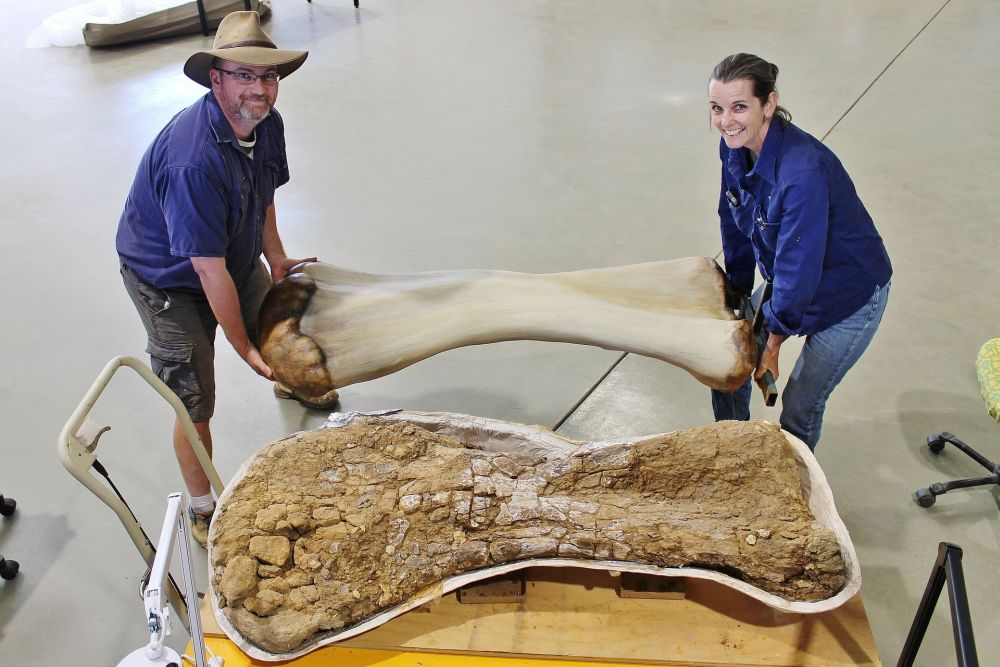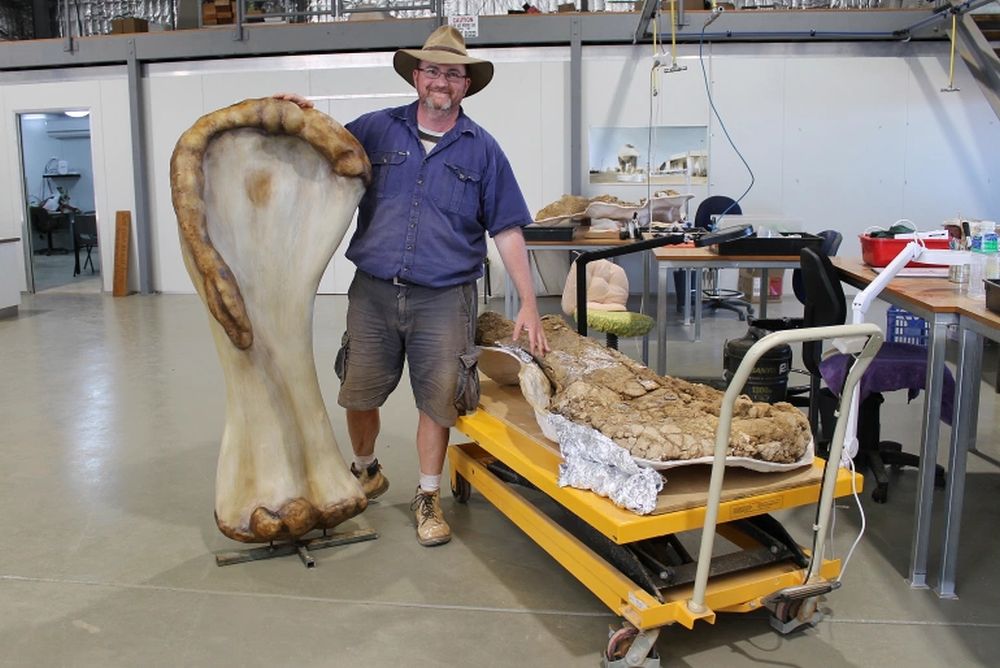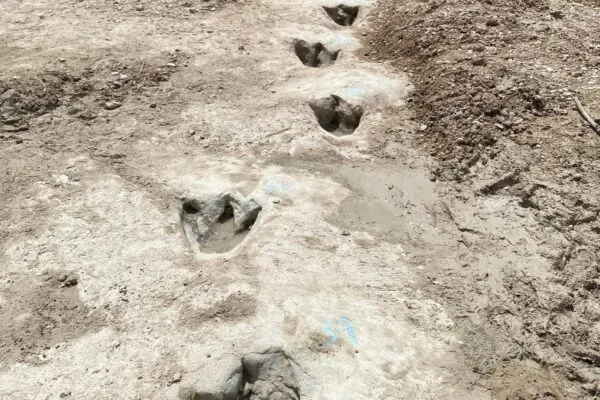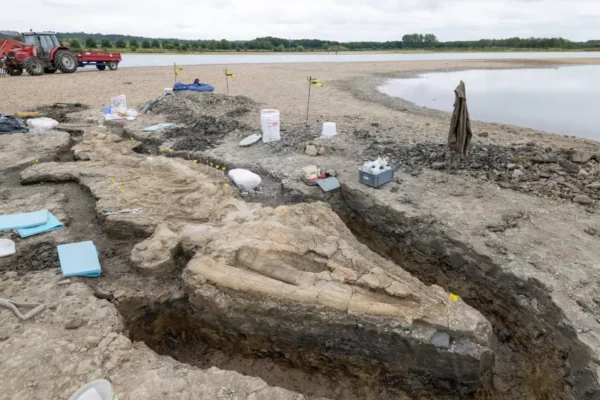New Dinosaur Species Found in Australia, One of the Largest in the World
After years of research, scientists have found a new dinosaur species in Australia, which is one of the largest species on the planet. This confirmation was made over a decade after cattle farmers first uncovered bones of the animal.
According to a research paper, published in the journal Palaeontology and Evolutionary Sciences, the plant-eating sauropod lived in the Cretaceous period between 92 million and 96 million years ago when Australia was part of Antarctica.

Image: Eromanga Natural History Museum
Paleontology estimates reveal that the dinosaur was of a height of 5-6.5 meters at the hip and 25-30 meters in length, making it as long as a basketball court and as tall as a two-story building. It also makes the new species the largest dinosaur ever found in Australia and one of the top five in the world.
Queensland Museum curator and paleontologist Scott Hocknull said,
Discoveries like this are just the tip of the iceberg. To make sure Australotitan was a different species, we needed to compare its bones to the bones of other species from Queensland and globally. This was a very long and painstaking task.
It was named the sauropod “Australotitan cooperensis,” combining “southern titan” with the name of a creek near where the first of these fossils were found in 2006 on a cattle farming property in Eromanga in Queensland State.

Image: Eromanga Natural History Museum
The team from the Eromanga Natural History Museum and the Queensland Museum used digital technology for the first time to 3D scan each bone.
Many further discoveries of dinosaur skeletons in the area, led to a strong belief that it must have been a sauropod pathway, and many are still awaiting full scientific study. Hocknull said that even larger dinosaur specimens can be found in the area, given the sauropods were generally preyed on by huge theropods.
Via: Reuters


